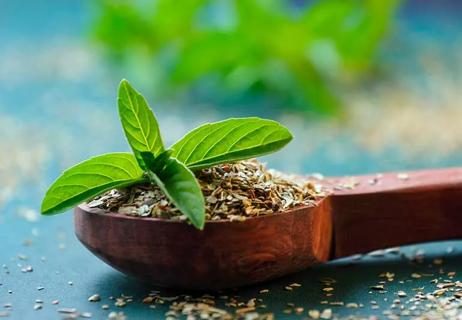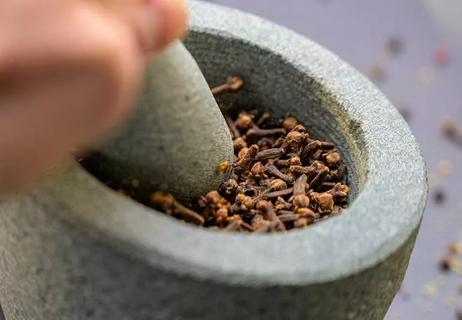Why water doesn’t work and what to do instead

You’re just trying to make dinner — and suddenly it’s like your eyes are on fire. After cutting a hot pepper, you’ve accidentally touched your face, and now you’re feeling the burn. Ouch!
Advertisement
Cleveland Clinic is a non-profit academic medical center. Advertising on our site helps support our mission. We do not endorse non-Cleveland Clinic products or services. Policy
Whether you’re feeling that post-pepper prickle in your eyes, mouth or stomach, it’s all from the same ingredient: capsaicin, a chemical irritant found in all varieties of chili peppers. And if you’ve ever tried to quell that fiery feeling with water, you know, it’s not an easy flame to extinguish.
Family medicine specialist Mark Rood, MD, explains why it happens, how to soothe the scorch and what to try instead of H20.
First, a little lesson in heat levels. Chili peppers’ spiciness is measured using the Scoville scale, which ranks each one in Scoville Heat Units, or SHUs. The higher a pepper’s SHU, the more capsaicin it contains, and the spicier it tastes — and feels.
A 2019 study compared how seven beverages stacked up against spicy foods: skim milk, whole milk, seltzer water, cherry Kool-Aid®, non-alcoholic beer, soda, and water. It found that only skim milk, whole milk and cherry Kool-Aid had any notable impact against the heat.
“Rinsing your mouth with anything is better than nothing,” Dr. Rood says, “but only milk and Kool-aid outperformed plain water.”
Milk contains a protein called casein, which can break down capsaicin — much in the same way that dish soap can cut through grease.
Advertisement
Doctors had previously assumed that whole milk would be more effective against spicy foods than skim milk due to the former’s fat content, but they both performed the same. Dr. Rood says this indicates that fat content isn’t a factor in the fight against spice.
That means that post-pepper, any kind of animal milk should do the trick. But don’t bother with milk substitutes (almond milk, oat milk, etc.), which don’t contain casein.
Let’s go back to that dish soap analogy for a moment. If you’ve ever tried to wash a greasy skillet using just water, you probably realized pretty quickly that it doesn’t work. That’s because water can’t break up grease molecules; you need soap for that.
The same is true of spicy foods. Capsaicin doesn’t dissolve in water, so while rinsing your mouth or your eyes may provide some cooling relief, it won’t do much overall. Enter casein, which can do what water can’t.
Sweet, flavored drinks probably fight spicy foods because of their high sugar content, Dr. Rood says, explaining cherry Kool-Aid’s place in the data.
“There are reports that say that sucrose reduces the burn of spicy foods, although it’s not as robust of a solution as milk,” he explains.
If you don’t have milk or Kool-Aid on hand when you find yourself with that mouth-on-fire feeling, try sucking on a sugar cube, which may reduce your discomfort.
The 2019 study only tested non-alcoholic beer, so no IPAs or hefeweizens got to test their chops against capsaicin.
As it turns out, though, alcohol can indeed break down capsaicin. But because most beers are primarily made of water, with only about 5% alcohol, they’re largely ineffective against pepper-induced pain.
Harder spirits could help in large quantities, but heavy drinking isn’t generally advisable. You’re better off sticking with milk.
It may sound a little gross to think about pouring dairy into your eyes, but hear us out. Just as milk can ease a burning mouth, so too can it soothe the pain of touching your eyes after prepping a pepper.
Have you ever heard of protesters splashing their eyes with milk after being pepper-sprayed? It’s the same idea, as capsaicin is the active ingredient in pepper spray.
“It’s not uncommon for medicals professionals to have milk available to render first aid to protesters impacted by tear gas and pepper spray,” Dr. Rood says. “Milk is safe for use in your eyes, and there is precedent for using it that way without harm.”
Maybe your mouth is fine, and you kept your fingers out of your eyes. (Good job!) But spicy foods can just as easily cause a fire in the belly.
Advertisement
If you’re experiencing indigestion after eating something spicy — think acid reflux, a roiling stomach or even ulcers — milk isn’t the hero you need. “Milk can actually worsen those symptoms because it sometimes stimulates acid that then has to then be digested, which starts a cycle,” Dr. Rood warns.
Plus, for the estimated 36% of Americans who are lactose intolerant, consuming milk and other dairy products can lead to more cramps, gas, bloating and diarrhea.
If that Nashville hot chicken or Thai green curry has left you with a troubled tummy, your best bet is to pop a calcium carbonate antacid (like Tums® and Rolaids®), which will neutralize your stomach acid and help stop the burn.
The best way to avoid the problems associated with spicy foods is to, well, avoid spicy foods altogether. But if you enjoy the taste — and maybe get a kick out of the burn — just take precautions:
And of course, keep some milk on hand!
Advertisement
Learn more about our editorial process.
Advertisement

The flavorful herb is full of antioxidants that may help regulate blood sugar

The commonly used herb may reduce inflammation, fight bacteria and help manage stress

The OR6A2 gene could be behind your dislike of this herb — but with time, your brain may be convinced to like it

This brightly colored spice can help fight inflammation and even improve your memory

This herb may calm anxiety, reduce bloating, help you sleep and boost your mood

This herb offers different potential benefits from the basil you find in pesto

This herb not only helps prevent chronic diseases, but also elevates every meal

Cloves contain eugenol, which may have anti-inflammatory and antibacterial properties

The best parenting style balances enforcing rules and showing plenty of love

Tips include cutting back on sugar, focusing on exercise and managing stress

It can be harder to let go when you’ve invested time, energy and emotions — but it might be the healthier choice long term